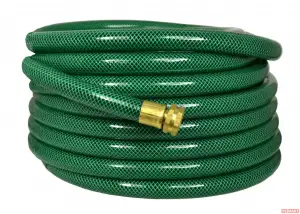Table of Contents
 Those who own a pool will know how expensive they are to start with and the fact that their maintenance can be even more costly. It’s best to handle a few things on your own, such as draining it. No need to call a pool maintenance service for the task since they’re going to charge you a lot!
Those who own a pool will know how expensive they are to start with and the fact that their maintenance can be even more costly. It’s best to handle a few things on your own, such as draining it. No need to call a pool maintenance service for the task since they’re going to charge you a lot!
This is not a job that will need to be done frequently, only every once in a while when its need arises. Once you’ve learned how to drain a pool with a garden hose, you’ll be able to do it on your own whenever your pool needs to be drained, without calling a technician.
Why would you want to drain your pool?
As we have already pointed out, draining a pool isn’t a regular chore. You may want to drain it every once in a while for the following reasons:
- You may need to drain the pool if the pool liner needs a repair or a replacement. Such repairs are generally not possible with water in the pool.
- You may have to rely on draining the pool if the TDI (Total Dissolved Solids) level needs to be stabilized.
- If your pool has a lot of debris or you want to start with fresh water since it hasn’t been used for a while, you may want to drain it.
- If you want to relocate the pool, you’ll again need to drain out the water first.
What you’ll need

Hopefully, you won’t need to buy anything new. Everything that you’ll need will already be available in your garden:
- ⅝ inch garden hose
- Functioning outdoor faucet
- Hose cap
Procedure to follow
Once you have everything ready, you are ready to learn how to drain a pool with a garden hose.
Preliminary Steps
- You need a garden hose that’s long enough that when one end attaches to your outdoor faucet, the other end is completely submerged in the pool.
- If there’s an automatic water fill valve in your swimming pool, turn it off.
- Choose a suitable drainage spot. You may have to drain it into the sewage system.
Setting up the siphoning system
- Attach one end of the hose to your outdoor faucet and take the other to the pool.

- Place this end of the hose into the pool until it is completely submerged in water.
- You may want to place a brick over the hose at the point where it crosses over the wall of the pool. Taking this step will prevent the hose from sliding out of the pool.
Siphoning water from the pool

Now that you have set up the siphon, here’s how to siphon water with a hose:
- Turn on the faucet from the other end and let the water flow through this end for a few seconds.
- Once water appears at the other end and flows into the pool, turn off the outdoor faucet.
- Remove the hose from the faucet and cover it with a hose cap. Make sure you hold the hose above the level of the water in the pool.
- Carry this hose end, that you have removed from the faucet, to the spot you’re going to drain the water. Make sure that the level of hose is higher than the water in the pool, while you carry it.
- Upon reaching the drainage spot, remove the hose cap and set it down where the water is to be drained.
- Return to the pool and check if the water is draining out correctly.
Remove the siphon
- Once the water has stopped coming out from the end of the hose that’s at the drainage location, the siphoning process is complete.
- You can remove the brick and take out the hose from the pool.
Empty the pool of the remaining water
- Few inches of water may remain in the pool after you’ve siphoned it with a hose. You may have to use a pump to remove the remaining water.
- If a pump isn’t available, you can also drain out the few inches that are left using a bucket.
Useful tips
The procedure, as you have seen, is quite simple. However, here are a few tips to keep in mind, they will make sure that the garden hose siphon pump technique is carried out smoothly:
- Check the local laws to see if there are any policies relating to water disposal.
- The location where you choose to drain the pool water must be at a lower level as compared to the pool itself. If you know how gravity works, you will understand why water will not travel at a higher spot
- Make sure that the end of the hose that’s inside the pool is completely submerged in water throughout the siphoning process. The siphon will not work properly if an air bubble makes its way inside the hose.
- If you’re draining the pool water into a sewer, make sure there’s a small gap between the end of the hose and the sewer drain. Taking this additional step will prevent backflow into the hose.
Conclusion
So you see that draining water out of your swimming pool isn’t as hard as it sounds. Anyone can do it; all you will need is a garden hose. No special tools or equipment are required. While it’s true that the job is a bit time-consuming, you should know that it only needs to be done every once a while, when it’s absolutely necessary.
For a job that needs to be carried out, possibly, once a year, most people wouldn’t mind taking out the time. Think about all the money you’ll save by skipping the involvement of a service technician. Learn how to drain a pool with a garden hose so that you can do it conveniently on your own without calling a technician.

